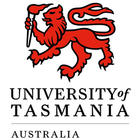Master of Environmental Geospatial Science
Master of Environmental Geospatial Science
Environmental challenges are becoming increasingly complex and problems like bushfire management and climate change requires highly skilled professionals. Environment professionals need to be able to analyse a variety of information, including mapped data, to adapt to the current crises. Business as usual is becoming increasingly data-rich and Tasmania’s Land Information…
Categories
COURSE DESCRIPTION
Environmental challenges are becoming increasingly complex and problems like bushfire management and climate change requires highly skilled professionals. Environment professionals need to be able to analyse a variety of information, including mapped data, to adapt to the current crises. Business as usual is becoming increasingly data-rich and Tasmania’s Land Information System puts us in the fortunate position of being able to use geospatial information for many planning and day-to-day decisions across a wide range of sectors.
This course will teach you to integrate geospatial and environmental knowledge to make practical recommendations for enhancing decisions around places – both predominantly natural through to highly urban. The unique combination of environmental and geospatial skills in a pragmatic, case-based learning environment will place graduates well for an exciting career.
You will apply skills in geographical information systems and remote sensing to address complex problems associated with managing ecosystems and fostering sustainable practices. These skills are in high demand by government and industry employers, and your will benefit from our close connections with the profession and work-integrated learning.
Graduate with the skills to tackle complex problems such as climate change, and how to use spatial data to understand changing landscapes.
Course objectives
Graduates of this course typically work for local and state government, not-for-profits, and the private sector. People with a combination of environmental and technical skills are in demand, with employers including environmental consultants. Graduates can conduct field research and map and report on those findings. They can combine these practical skills with desktop investigations and spatial analyses. All parts of society are needing to make informed decisions about complex issues to do with biodiversity, climate change, bushfire responses and liveable cities, to name a few. Graduates of this course are equipped to tackle these challenges.
Learning Outcomes
1 Synthesise theory and contemporary knowledge in environmental geospatial science fields to define problems and solutions.
2 Justify solutions to a range of complex environmental geospatial science problems by applying data collection and analysis techniques
3 Manage the design, documentation, and resourcing of geospatial science solutions in diverse environments workplaces, and across contested environment issues
4 Develop and justify your own positions on environmental geospatial science issues in line with principles of sustainability.
Career outcomes:
Specialist geospatial skills give graduates access to a range of jobs at both entry-level with government, industry or a not-for-profit, including the following:
- Environmental Project Officer
- Environmental Consultant
- Environmental Scientist
- Environmental Technician
- Geographic Information Systems Officer
- Natural Resource Officer
- Natural Environment Project Officer
- Sustainability Advisor.
REQUIREMENTS
Admission to most postgraduate coursework courses at the University of Tasmania require qualifications equivalent to an Australian bachelor degree.
Candidates for the Master of Environmental Geospatial Sciences shall be qualified for entry if they hold a bachelor degree in any discipline at the University of Tasmania or hold other tertiary qualification(s) deemed by the College to be equivalent for this purpose.
English Language Requirements are: IELTS (Academic) 6.5 (no individual band less than 6.0), TOEFL (iBT) 88 (no skill below: Reading 16; Listening 16; Speaking 18; Writing 22), PTE Academic 58 with no score lower than 50, English for Academic Purposes 2 – 65% (no individual score less than 60%)
EDUCATIONAL INSTITUTION
The University of Tasmania was officially founded on 1st January 1890 and is located at Sandy Bay, Tasmania. In addition to the main campus at Sandy Bay, it also operates out of the Newnham Campus and the Cradle Coast Campus. The most popular courses offered are the environmental studies that include wilderness management, marine sciences and indigenous studies in Tasmanian literature. Other unconventional courses include agriculture development, studies on the community and population and ocean study programs. The university also comprises of a Music Conservatorium, Art school and a School of Clinical studies.




